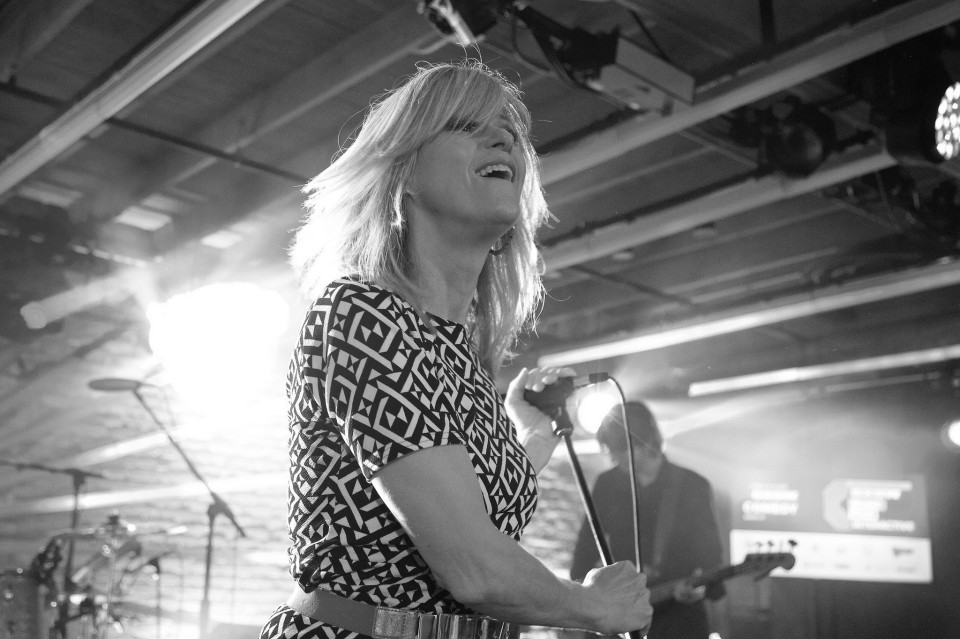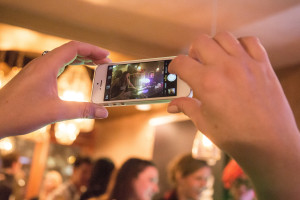Why Female Empathy is the Best Branding Tool for Business
One of my first jobs out of college was as a tech at a recording studio. All the engineers were male, all the producers were male. No biggie. Years later, I become a commercial freelance composer. Again, ad agencies, music houses and other composers: mostly male. Still, no biggie.
Then, I visit Paris. Oh la la. I meet with boutique ad agencies and production companies who claim they are “full service agencies,” yet do not provide music for their branding clients. I speak with their CEOs about offering this service. And they are 75% female.
In Paris, everything is luxury. Luxury branding, luxury markets. I thought, oh, advertising in Paris is more female-dominated. No biggie. Also, not true.
Here’s the truth: Luxury is a niche market that is based on feelings and experiences – and always positive. Cruise lines, jewelry/luggage brands and high-end hotels like to evoke experiences of romance, excitement and unfettered relaxation. Mainstream advertising, in general, is starting to catch up to what luxury brands were onto years ago, in that they are tapping into empathy, human experiences, and moving away from an industrial and corporate methodology. (I mean, did you watch the Superbowl this year? How many ads were pulling on heart strings?).
So who is most in touch with their feelings and how to express them? Women. (Yes, this is a stereotype — but it is also biological and grounded in evolution. I could write volumes on this but for the purposes of this article, play along.)
And what is the one element in the world that can alter emotions in less than a second? Music. (No argument here. Ever watch Jaws without the soundtrack? Not so scary. Or Superbowl ads? Not so sad.)
Music’s Startling Influence on Branding
So…I speak at SXSW in March of 2014, to a room full of entrepreneurs, marketers, startups, etc. and learn that everyone is baffled that music is so important in how people remember visual branding. Like, it would have never crossed their minds to incorporate it into their marketing initiatives. So I’m up against a bit of mainstream educational challenges. “Increasing awareness of music as a branding tool” is next on my to-do list. What do I need? Facts. Case studies. Proof.
There have been many scientific studies done on music’s effect on memory, productivity, and emotions. Here are just a few of their findings:
-
-
- When music was played in the workplace, keypad operator’s productivity increased 18.6% and errors decreased by 37%.
- When fast music was played in a supermarket, sales increased by 38%.
- When German music was played in a wine store, more German wine was purchased. When the music was switched to French music, more French wine was purchased.
- Alzheimer’s patients are able to remember songs from their childhood because music is stored in a different place in the brain from visual memories.
- Your brain can finish a song once you start hearing it because of this separate memory compartment, called the Auditory Cortex, just for music
-
After Proof, Comes Application
Since the internet has finally caught up to video, multimedia marketing is ubiquitous. So I expanded my research to include the importance of videos in selling. And it turns out production quality (which includes a custom-made music element) is paramount. Here are a few baffling facts I found about videos:
-
-
- Video appears in 70% of the top 100 search results listings
- Viewers are 64-85% more likely to buy after watching a product video
- 75% of users visit the marketer’s website after viewing a video
- Real estate listings with videos receive 403% more inquiries than those without video
- Your website is 50 times more likely to appear on the first page of a search engine result page if it includes video
- Professionally produced video optimized for eCommerce outperforms user-generated video (read- DIY) by 30%
-
Now, all of this being said, it really comes down to this: What do you want the customer to feel and do after they view or hear your video or ad?
The key point is that feelings drive actions, plain and simple: provide the right music for your viewers, and you can alter their emotions. And you don’t even need to “speak” music.
I formulated a Brand Assessment Form to help clients find words to define and hone how to express their brand. Once this form is filled out, I — as their “sonic branding composer” — have all the information I need to create a piece of music that is perfectly aligned with their brand, fills any messaging holes, and increases their overall image and value.
Now this year at SXSW, I got the opportunity to provide a workshop geared towards folks looking to increase the impact of their branding. I showed a few examples of sonic logos (the short musical bit that is the auditory equivalent of a graphic logo), of “audio branding” that is aligned with the company. I also provided an example of terribly mis-aligned audio branding.
The latter is very important, because alignment is a word I love when it comes to branding. Your brand assets (logo, tag line and video music) can be saying one thing, while the content of your business — what you provide, how you deliver it, and the overall experience — can be saying something completely different, which not only makes your customer do more work to understand you, it decreases production value, and has potential customers questioning your products’ quality. You also miss on an opportunity to really say – and strongly reinforce — what your company’s message is! For example, if you’re providing a video course on how to gain financial stability and peace of mind, you don’t want your intro-graphic and logo to be a heart-thumping, scary, trailer-like clip, right? The two aspects just don’t belong together.
Armed with these new facts, the notion that empathy is currently driving advertising, and that music can alter emotions (thus motivating specific actions, with the end goal of prompting the customer to buy your product), the logical next step is to consider how these valuable facts can improve your brand’s awareness with the public.
When you are clear on how to talk about your brand, you can then be clear on how your branding assets should look and sound so that they relay the right emotional message. A focus on this crucial element in advertising – and how women can best contribute to it – is a worthwhile place to start in this new area of inquiry.
Written by: Cheryl B. Engelhardt, Founder, Composer , CBE Music LLC (@CBE)
SXSW Presentation: The Skinny on Sonic Logos (& Why You Need One Now)
TAGS: SXSW
 Effective Communication
Effective Communication Women Making History
Women Making History Grants & Funding Sources
Grants & Funding Sources Interview Prep
Interview Prep Impactful Leadership
Impactful Leadership Dressing for Work
Dressing for Work Dressing for Your Style
Dressing for Your Style Interview Style Tips
Interview Style Tips Women's Stocking Stuffers
Women's Stocking Stuffers Gift the Busy Traveler
Gift the Busy Traveler Airport Layover Activities
Airport Layover Activities Traveling & Eating Healthy
Traveling & Eating Healthy Travel Like a Boss Lady
Travel Like a Boss Lady The Dual California Life
The Dual California Life Gifts for Thanksgiving
Gifts for Thanksgiving Summer Reading List
Summer Reading List Top Leisurely Reads
Top Leisurely Reads New Year, New Books
New Year, New Books Life Lessons from a Sitcom
Life Lessons from a Sitcom Oprah, Amy or Amal?
Oprah, Amy or Amal?














